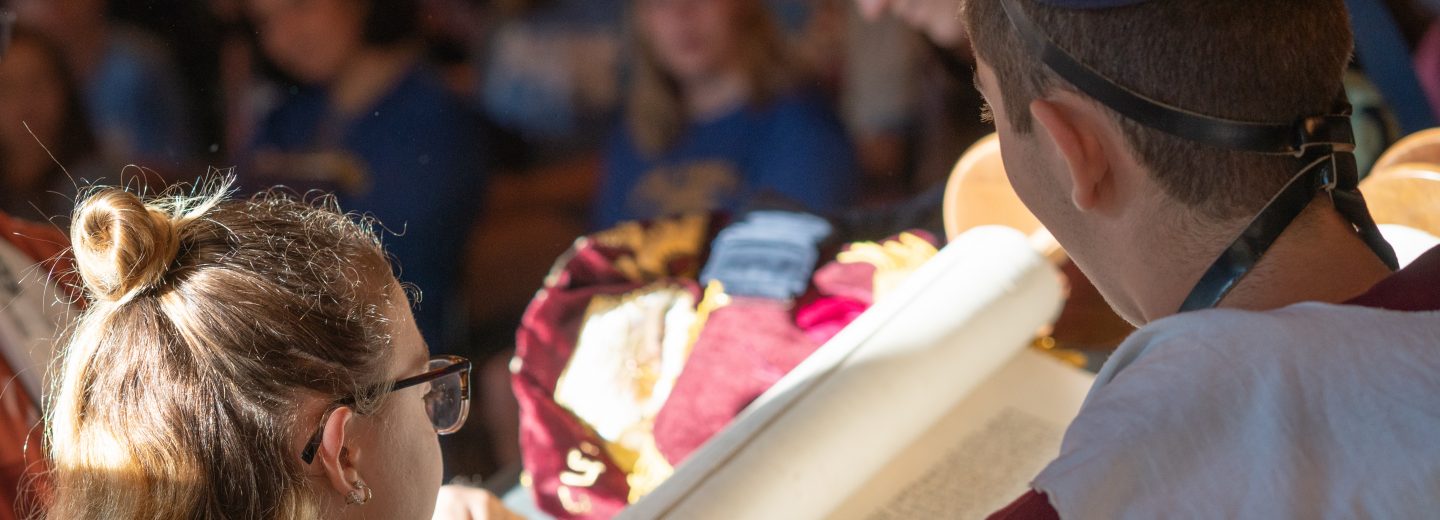Illuminating Places We Cannot Reach
:בְּהַֽעֲלֹֽתְךָ֙ אֶת־הַנֵּרֹ֔ת אֶל־מוּל֙ פְּנֵ֣י הַמְּנוֹרָ֔ה יָאִ֖ירוּ שִׁבְעַ֥ת הַנֵּרֽוֹת
“When you light the lamps, the seven lamps shall cast their light toward the face of the menorah.”
At the very beginning of this week’s parsha we hear God instruct Aharon, the Kohen Gadol (high priest), regarding lighting the menorah in the Mishkan: “Speak to Aharon and say to him: “Beha’alotcha et ha’nerot — When you light the lamps — the seven lamps shall cast their light toward the face of the menorah.”
Ultimately, this menorah would reside in the Beit Hamikdash, specifically, in the outer chamber of the heichal, the sanctuary. It would be filled with oil each morning, it would be lit each afternoon, and it would burn each night, symbolizing the Divine Light which spread from the Temple to the rest of the world.
While in our parsha it is Aharon, the Kohen Gadol, who is commanded to light the menorah, ultimately it did not have to be a kohen who lit the menorah in the Beit HaMikdash. According to Jewish law any person could perform this mitzvah. However, the heichal, where the menorah stood, was only accessible to the kohanim.
How are we to understand this paradox? According to halacha, a non-kohen was technically allowed to light the menorah, but that same non-kohen was not allowed into the area of the Beit HaMikdash where the menorah stood. Quite the paradox!
The answer lies in how we light the menorah. Perhaps a kohen could light the menorah with a normal torch. They could walk right into the heichal, step right up to the menorah, and apply the torch, illuminating the world with its spiritual light.
But for the non-kohen, a longer torch is required. Chassidic thought explains that this longer torch is actually the primary lesson in this paradox.
The lesson of this longer torch is that each of us should aspire to spiritual levels that are beyond our current reach. Of course we shouldn’t delude ourselves. We are not all kohanim, after all, and we are not all allowed into the heichal! But at the same time, we should never stop striving to elevate ourselves spiritually. Even the heichal can be illuminated by anyone who strives to use the longest torch they are able to grasp. Even when we cannot enter the heichal we can still influence it, act upon it, illuminate it.
The lamplighter is a key figure in Judaism – the person who spreads light, knowing that it does not belong to them, while also knowing that sharing the light from their torch does nothing to diminish the light from their own torch. Parshat Beha’alotchah offers the additional lesson that we can spread light even to places that we ourselves cannot reach.
Questions for the Shabbat Table:
- What is a way that you have striven to spread light to places that you cannot reach? What is special or unique about the light that you spread as a lamplighter, and how have you gone out of your comfort zone to spread that light?
- What is a way that from this Shabbat to next Shabbat, you can attempt to stretch yourself spiritually?




